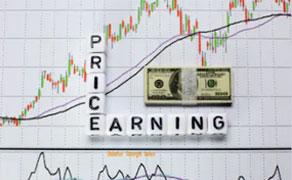How PE Ratio Can Mislead You While Selecting Stocks | Limitations of PE ratio !
A commonly used thumb rule in investing is that a company selling below a PE of 10 is likely to be cheap and one above 30 is likely to be expensive. Many investors continually use the price-to-earnings (P/E) ratio as a way to make a claim about an undervalued or overvalued stock. But there’s so much more to a company and a stock beyond a P/E ratio and, in this article, you will learn How PE Ratio Can Mislead You While Selecting Stocks .
What Is P/E Ratio ? | PE Ratio Explained
The price-to-earnings (P/E) ratio is calculated by dividing a company’s stock price per share by its earnings per share (EPS), giving investors an idea of whether a stock is under- or overvalued. A high P/E ratio may suggest that investors are expecting higher earnings growth in the future compared to companies with a lower P/E.
P/E Ratio Formula and Calculation
You can calculate P/E Ratio by dividing the market price of a share by the earnings per share. For instance, the market price of a share of the Company ABC is Rs 80 and the earnings per share are Rs 8 . P/E = 80 / 8 = 10. So the P/E ratio of ABC Ltd. is ten, which means that investors are willing to pay Rs 10 for every rupee of company earnings.
But Why the PE ratio is not so important ? | How PE Ratio Can Mislead You While Selecting Stocks !
P/E Ratio Misses the Growth Picture | How PE Ratio Can Mislead You While Selecting Stocks
The biggest drawback of using the PE ratio alone is that it doesn’t consider the growth aspects of the company. Various companies grow at different rates in their life cycles. During the establishment phase, growth rates tend to be high compared with those in the maturity phase. If investors go only by the PE ratio, the companies that grow slowly would seem attractive as their stocks would be trading at substantially lower PE multiples. The high-growth companies, on the other hand, would appear expensive as they would trade at higher PE multiples. Fundamentally, a high-growth company is a better pick. To account for such distortions in the PE ratio, you might like to use the concept of price to earnings growth (PEG) ratio ( know more about it here https://www.investopedia.com/terms/p/pegratio.asp ), which compares a stock’s PE to its earning per share (EPS) growth rate.
Completely Ignores Capital Structure
The calculation of the P/E Ratio accounts only for the earnings and market price of an equity share. It doesn’t look into the debt aspect of the company. There are companies that are highly leveraged from debt aspects and hence highly risky investments. A high P/E ratio of such companies will not bring forth this aspect. Thus, it completely ignores the consideration of debt. If a company has multi-tranches of debt and upcoming principal repayment , you will completely miss the ball on the true financial standing of a company.
P/E Ratio is Not a One Size Fits All Approach
When in doubt, compare a company only to its peers. Why would you compare an apple to an orange? Avoid the herd mentality that you can apply the same base of a P/E ratio across all companies in all industries. If you compare the PE of a company from the Refinery industry to that of another company in the Personal care industry, you will always find the oil and gas company cheaper. If you follow this apple-to-orange comparison approach, you will never be able to buy ‘apples’. That’s why PE comparison should always be in the same industry. Therefore, while evaluating the companies based on PE ratio, always compare the company with its competitor or the industry average. If the PE of a company is less than its competitors and the industry average, then it can be considered as undervalued.
Final Takeaway | How PE Ratio Can Mislead You While Selecting Stocks !
PE ratio is a simple and effective fundamental tool that gives a lot of information about the company’s valuation. However, there are a few drawbacks when using the PE ratio as a single deciding factor while investing in stocks. While comparing PE ratio, low PE doesn’t ALWAYS mean that the company is a good investment. Now with an understanding of How PE Ratio Can Mislead You While Selecting Stocks, you know why this popular valuation metric is not so important. It is indispensable to examine the backdrop of the company, considering all constituents, before investing.
Read also : 100 Minus Age Investment Rule | How Much To Invest In Equity https://thebrightdelights.com/100-minus-age-investment-rule-how-much-to-invest-in-equity/
